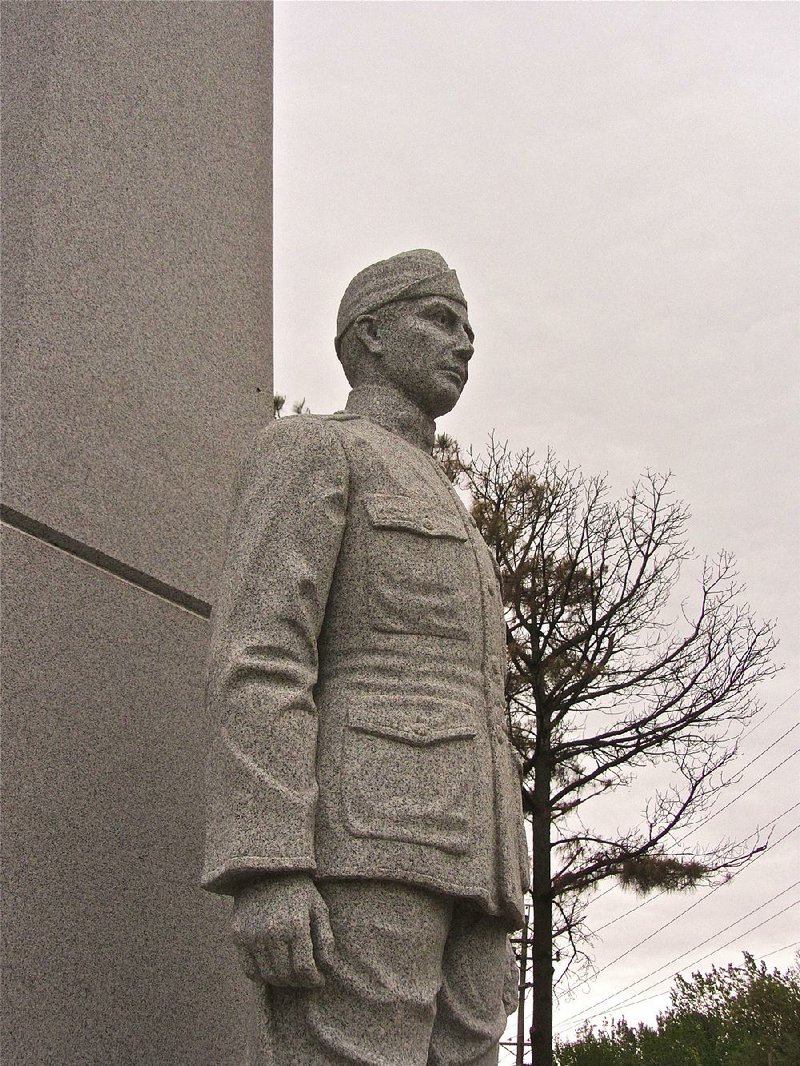MANILA -- If you asked 100 people in downtown Little Rock why Herman Davis is a highly honored Arkansan, you'd be lucky to find one or two who knew the answer.
Yet he has his own state park, one of only two in the 52-park system devoted to a single historical figure. (The other is Conway Cemetery State Park, named for Arkansas' first governor, James Sevier Conway.)
Herman Davis State Park is one of Arkansas' smallest, occupying less than an acre. Located in the Mississippi County town of Manila, it features a 25-foot obelisk and a life-size statue of the World War I Army private in his doughboy uniform complete with puttees.
Davis was a country boy like so many Americans when the nation went to war against Germany in April 1917. Born in 1888 in Big Lake Island, which later changed its name to Manila, he quit school after the fourth grade to help his parents.
While still a teenager, he began earning money as a hunting guide. He was a crack shot, according to The Encyclopedia of Arkansas History & Culture, bringing down as many as 400 ducks in a day back before laws set game limits. He married and had a son, but his wife later left him.
When America entered World War I, Davis was originally rejected for military service because he stood only 5 feet, 3 inches tall. Then he was drafted in March 1918. He trained at Camp Pike in North Little Rock before sailing to France in June with the 29th Division's 113th Infantry Regiment.
Recounting his combat duty, the Arkansas encyclopedia reports that as a scout he "was required to go out in advance of his company. Many times he encountered poison gas."
When his platoon came under fire near Verdun, he "crawled within 50 yards of the gun and killed four enemy gunners." In other engagements, he was credited with fatally shooting 15 Germans in a machine-gun nest and 11 of the enemy leaving a dugout.
Another time, German soldiers were setting up a machine gun at what they thought was a safe distance from Allied trenches. Davis killed five of them. He supposedly said later that 1,000 yards was "just good shootin' distance."
He received the U.S. Distinguished Service Cross, which ranks just below the Medal of Honor, as well as several French decorations. When Gen. John J. Pershing's roll call of the war's 100 heroic figures was published in 1919, he was among those listed.
Discharged in 1919, Davis resumed work as a hunting guide near Manila until his health failed in 1922, due to the poison gas exposure in France. He had told nobody about his war exploits and kept his medals tucked away in his fishing tackle box until his military prowess came to light through Pershing's list.
After Davis died in January 1923 in a Memphis hospital, Arkansas schoolchildren collected pennies to help pay for the obelisk and statue, which were dedicated on Memorial Day 1925. His coffin was moved from a nearby cemetery and reburied at the monument's base.
One inscription at the site salutes Davis with a rote epitaph that could apply to any fallen soldier: "He gave his life upon the altar of his country."
Another, from the private's unit commander, speaks with honest and heartfelt admiration for the sharpshooter from Manila: "The smallest but bravest and best-liked man in my company."
In Little Rock, the iron fountain near the entrance to the Old State House Museum is named for Davis, with a plaque noting his battlefield exploits.
Herman Davis State Park is located at Arkansas 18 and Baltimore Street in Manila, 180 miles northeast of Little Rock. It can be visited seven days a week. There's no admission charge. For more information, visit arkansasstateparks.com.
Weekend on 04/30/2015
